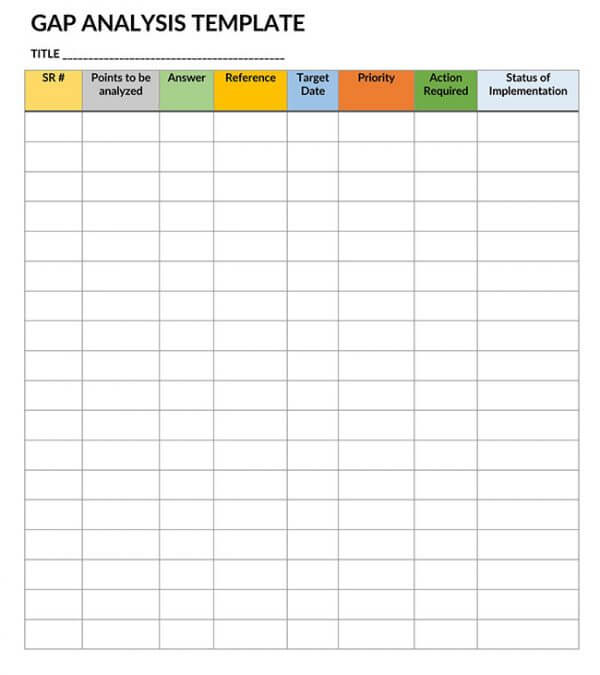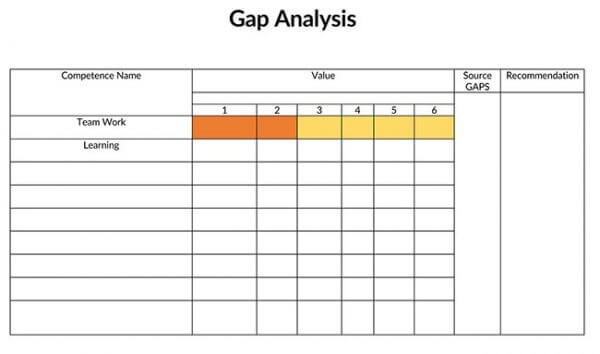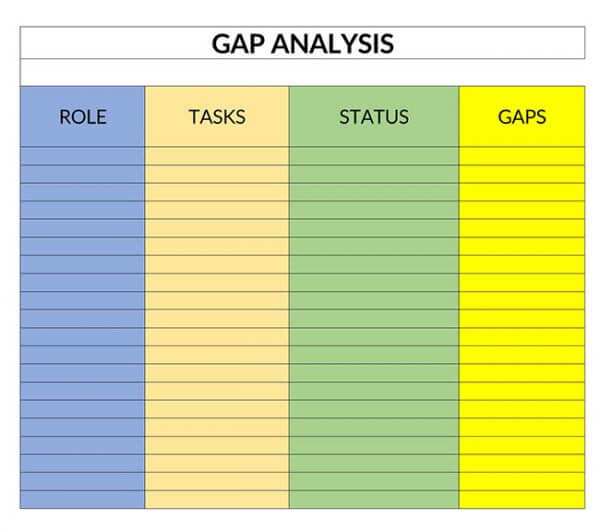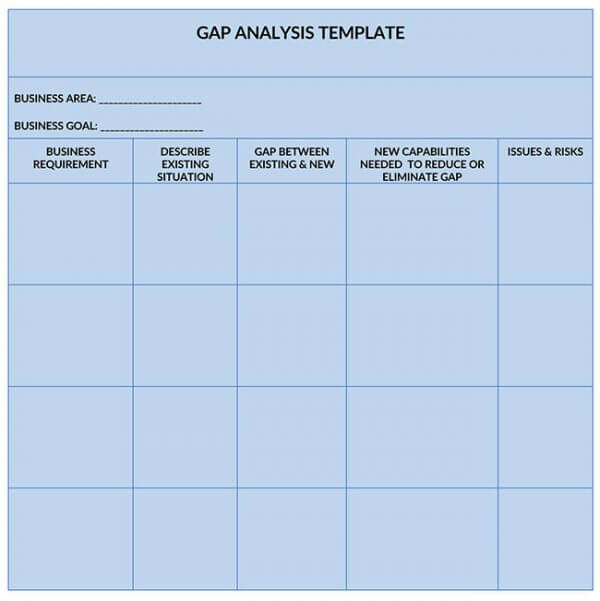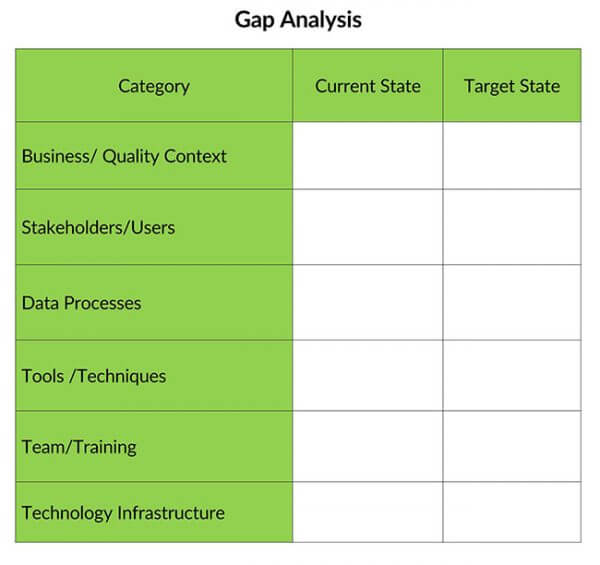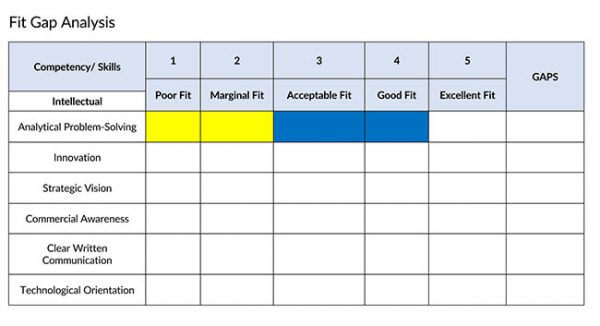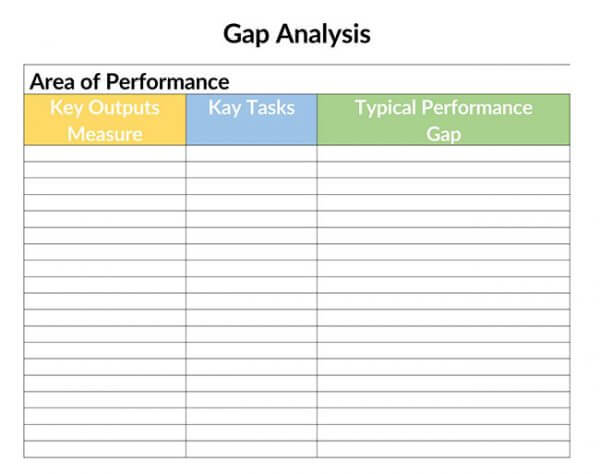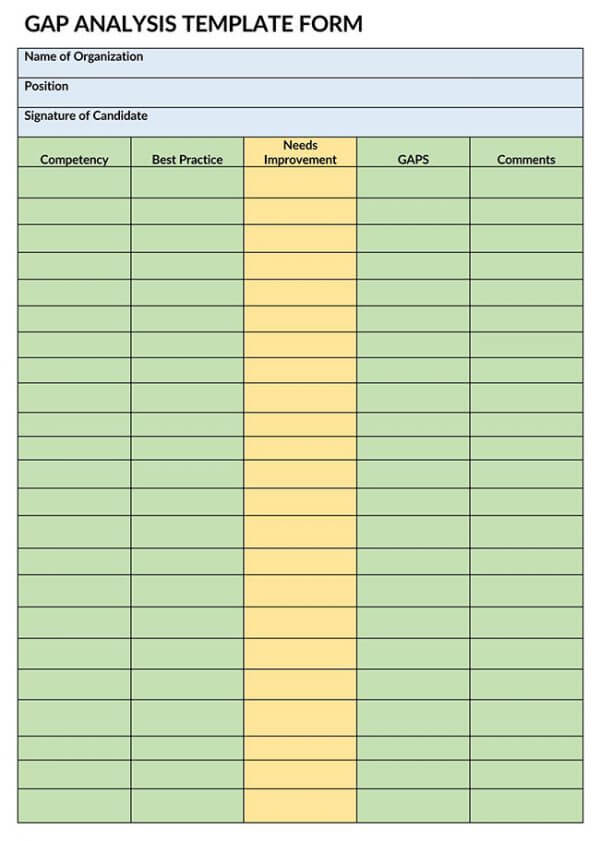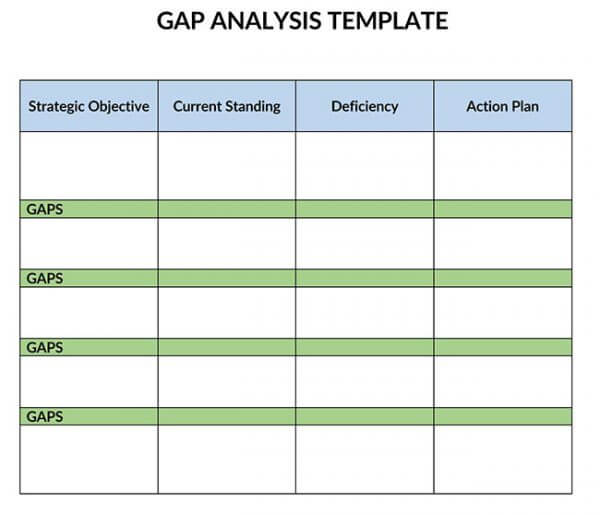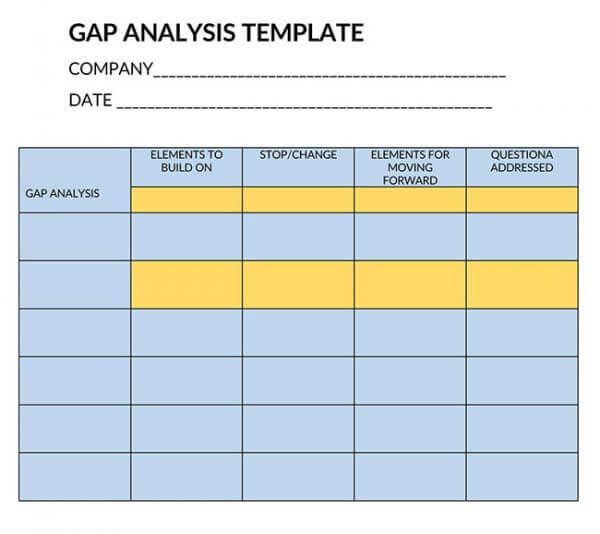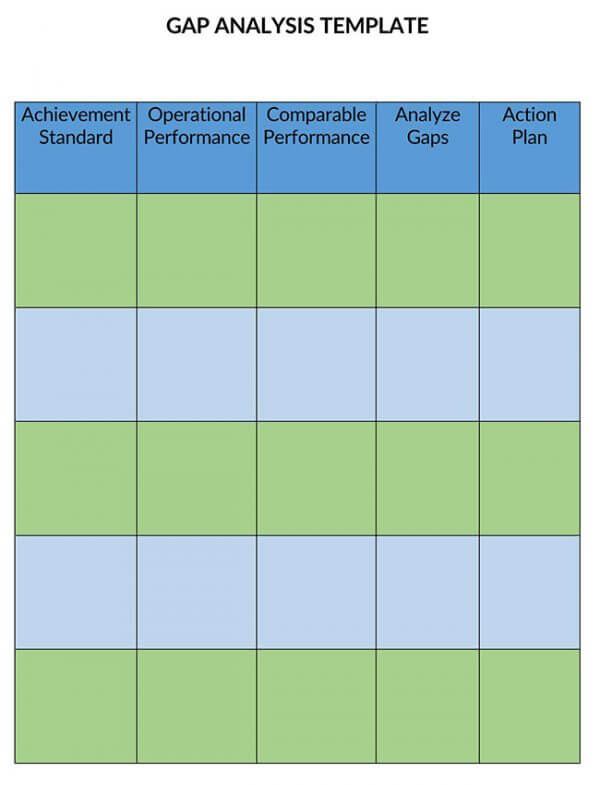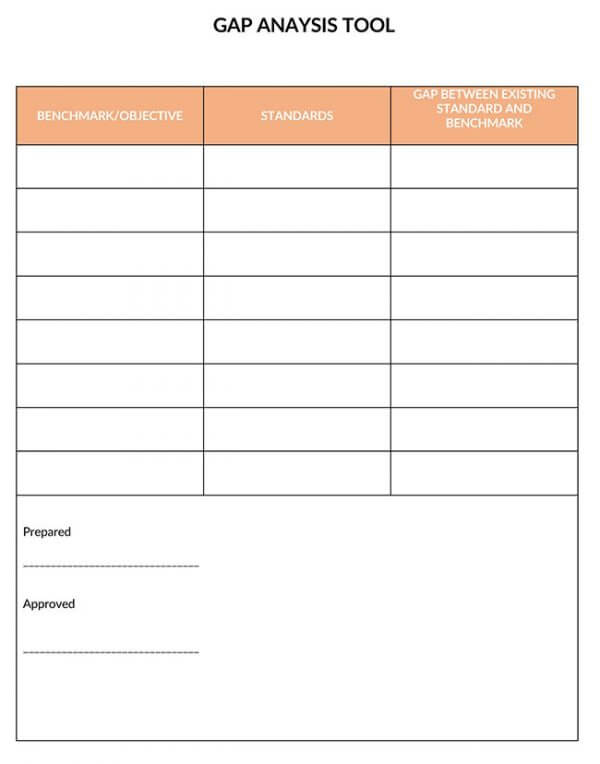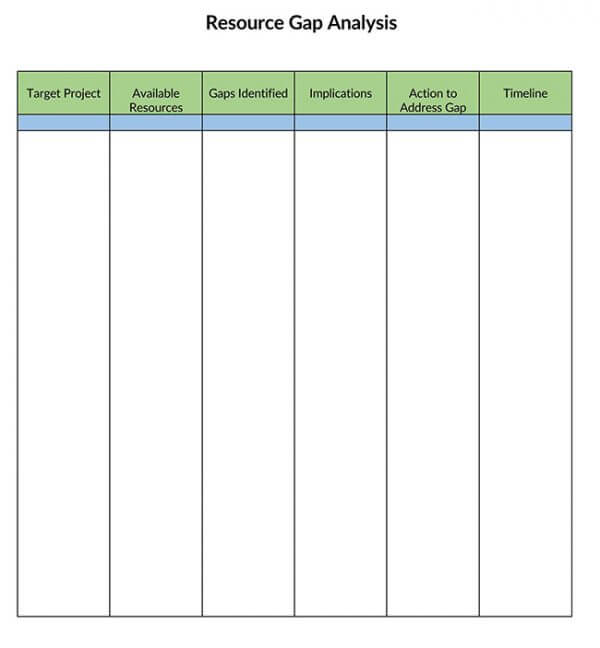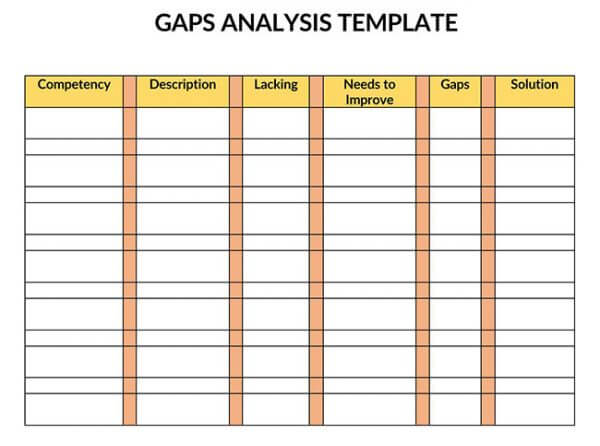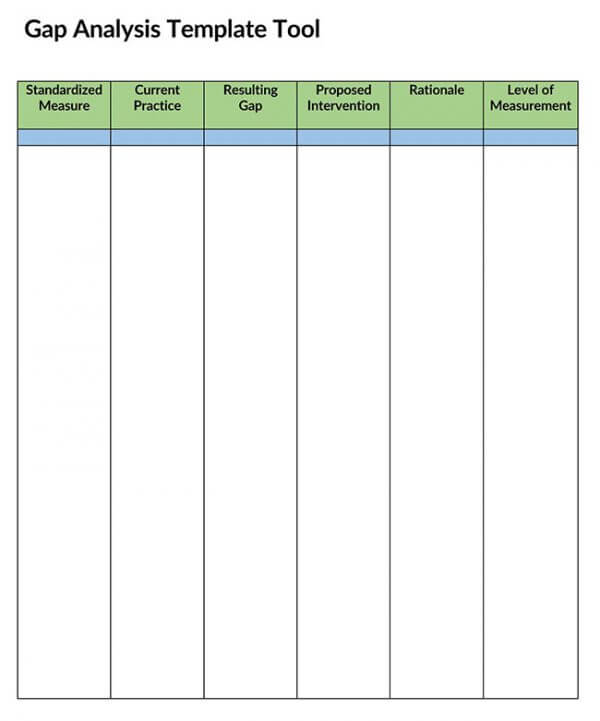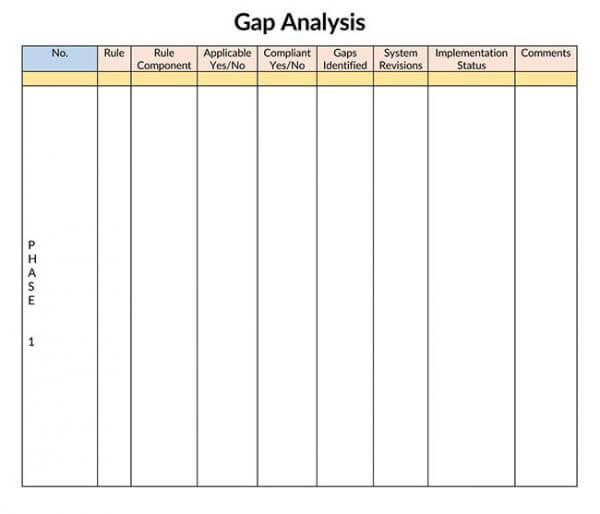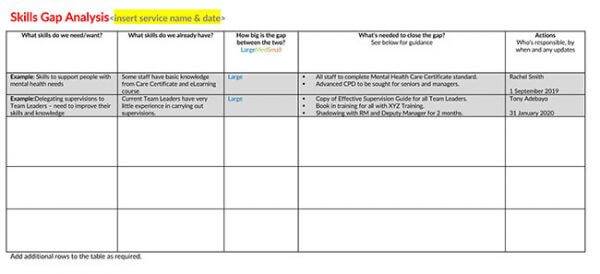A skill gap analysis assesses the difference, i.e., the gap between a current state and a wanted future state. Skill gap analysis is the process through which organizations compare their current team performance with their desired and expected performance.
A skill gap analysis assessment helps HR identify the skills and knowledge lacking amongst the organization’s employees. Upon discovering the needed information, the HR then addresses the skill gap through reskilling, upskilling, succession planning, among other means.
Reasons to Conduct a Skills Gap Analysis
A skill gap analysis is essential to preventing redundancy in any organization. There are 7 primary reasons why an organization should consider conducting a skill gap analysis.
These are:
Insights into entire workforce
Organizations get to identify which of their employees hold the highest skill set in respective aspects, and departments in the organizations also highlight the employees with crucial skill gaps.
With the information, organizations are well informed on which training resources to pay immediate attention to to fill in the skill gap. In turn, the whole process ensures optimal use of resources geared to improve the general performance of the task force.
Overview of the entire organization
Through a skill gap analysis, it’s easy to determine which of the departments or teams doesn’t have the requisite skills and resources to meet the whole organization’s objectives at large.
It’s a deeper delve into a company’s employee make-up with a microscopic look at particular individuals in each department while determining which skill the individuals and department require training in. It also highlights any need for hiring new professionals to fill in the skill gap.
Boosts individual learning and development Employees can identify the improvements they need to make at an individual level, from acquiring new skills to improving those they have to optimize their current and future performance.
Strategic workforce planning
Work environments are constantly evolving; a skill gap analysis analyzes in light of this reality. Therefore, such an approach enables an organization to consider its choices when hiring concerning future changes and how the new skill set will aid the organization in achieving its objectives.
Improve recruitment efforts
As opposed to an emergency or reactive hitting routine, every time a new need pops up in an organization, it’s more effective and productive to have overseen skill gaps. A skill gap analysis foresees future gaps and projects when these gaps are likely to arise. With such information, a company can put a long-term recruitment strategy into place, ensuring that the gaps are always attended to beforehand.
Increase productivity
The end goal of skill gaps analysis is providing the existing employees with the needed training required to close the gaps, which infinitely raises theirs productively.
The training fills existing gaps, but it also fills any possible future gaps in task forces; this wholesomely benefits an organization by having content employees who have had their career development needs to be met.
Creates a competitive advantage
The biggest competitive advantage gained by organizations that carry out a skill gap analysis is that they can fill in the areas that they are weak, which steer them way ahead of competitors that haven’t realized their weaknesses. By learning the strengths and weaknesses of their workforce, organizations can consciously plan their learning, development, and recruitment, ultimately optimizing their performance.
Approaches to Conduct Skills Gap Analysis
When it comes to conducting a skills gap analysis, there are two primary approaches or methods that help measuring the skills gap. These include; qualitative and quantitative methods. A combination of these two methods generates the most accurate outcome in an analysis.
Qualitative method
A qualitative approach is based on organizational development. It involves conducting a diagnosis of the skill level that the company should have, an analysis of the skill level the organization actually has, and finally, designing interventions to bridge the gap between the two.
Scope and diagnostics
Scope and diagnostic in a skill gap analysis involve identifying the needed skills. The following questions are a guide to narrow down and identify these requisite skills needed by an organization in the present and future;
- What is the mission of the organization?
- What are the business goals of the organization?
- What are the critical skills needed for the organization to meet its mission and business goals?
To determine whether a skill category is critical or not, consider as follows: If an employee lacking the specific skill still satisfactorily completes the requisite task, then the skill is non-critical. On the other hand, if an employee lacking the specific skill causes them to give an unsatisfactory outcome, then the skill in question is critical. The skill is critical to the organization’s success.
After the identification of the critical skills, the next thing is to identify any possible future skills that your organization and industry it is in may require in the future:
- What jobs in the industry or within the organization are likely to go fully or partially automated?
- Which skillset is currently on the rise in the industry?
- What kind of jobs (currently non-existent) will the organization require more?
Data collection and analysis
Once the scope and diagnostics are established, the next step is to collect and analyze data. There are three main objectives of this phase:
- To analyze what tasks are currently carried out.
- To rate the importance of the current tasks and,
- To inquire on the skills needed to complete the work properly
The following are the requisite activities to conduct the above analysis:
- Coming up with job profiles then establishing the critical skills required to fulfill these profiles.
- Review the current position descriptions in light of any future needs.
- Consider the impact of any upcoming changes in regulations as well as possible future work trends.
- In light of the above, develop a list of competencies that accurately describe what is required to do the work.
- Conducting an inventory of the employees’ current skills.
- Check the position descriptions
- Their job class specifications
- Conduct performance evaluations and employee assessments.
- Conduct focus group meetings with the employees, managers, and supervisors.
- Conduct individual interviews with the employees, supervisors, and managers.
- Identify the skill and competency levels of the employees.
Use data from the above steps to gather the competency assessment and have it as a single searchable database. The database should include every single employee and all their existing competencies. The next step is to cross-check this database with the formally identified critical skills for the present and future of the organization.
Designing interventions
The first two steps lead to an establishment of the existing skill gaps in the organization. The next and final step is creating a solid intervention that would fit the organization’s needs using the identified skills gap.
The following are examples of potentially identifiable skill gaps;
- Lack of employees with soft digital skills such as customer-centricity.
- A shortage of digital skills.
The skill gap interventions to put in place will depend on the skill gaps identified. The following are examples of such interventions;
- Job redesign- The skill gap analysis may sometimes lead to a conclusion requiring the responsibilities and tasks of certain jobs to get re-arranged, that is, job redesign. The job redesign may even require reskilling some employees to fill in the newly required skills.
- Training of new skills and development of the existing- This is one of the most common interventions after a skill gap analysis. The training re-skills employees with the missing and newly required skills.
- Recruitment of new employees with the requisite critical skills- the results of a skills gap analysis often necessitate a change in the criteria used when hiring new employees. Even after upskilling and reskilling employees, eventually, some of them will leave, transfer and retire, among other reasons that necessitate fresh recruitment from time to time.
Hiring personnel that already possess the critical skills saves the organization time and resources needed to train on the skills. It also ensures that all the new task force is operational and faster productivity.
Quantitative method
A quantitative method involves the use of an algorithm to conduct the skill gap analysis.
Mapping of the skills
A quantitative method in a skill analysis involves measuring the gap present in each competency level of the examined employee. Based on the size of the gaps, the organization may then organize a training program or self-training activities. Like the qualitative method, the procedure here requires a map out of the requisite skill for individual working profiles.
Benchmarking
The benchmark needs for each competence required may be determined from employees to the manager or vice versa.
The following is the algorithm to indicate the skill gap: (the algorithm uses the current skill state as mapped out against a benchmark of the ideal level of skills in the organization)

Where;
- G – The gap
- N – Necessity score awarded to the interviewee
- ith – The employee under interview
- jth– The skill that ith is under interview for
- P – the attributed score to the employee’s possessed level of skill
- F – Frequency of the employee’s use of the skill in question.
- C – The constant that cuts the effect of negative or low gaps that is one or zero
- F –The frequency of use that the ideal benchmark of the company would require, which represents the threshold above which the shortage of skills should have met. It represents the problem that needs to be solved while taking the cost of training into account.
- K – permits that only positive gaps are taken into account the except that the employee does not sufficiently possess a frequently used skill.
After gathering all the requisite data, the next step is to examine all the deviations between the employees’ level of skills versus the necessary level against the frequency they are to put into work. The approach allows the organization to take up a skill gap intervention.
Conducting a Skills Gap Analysis
Having reviewed methods used to conduct an analysis, the following are the steps to follow when conducting a skill gap analysis:
Plan
Planning is the most crucial step when conducting a skill gap analysis. It involves compiling a list of all the employees that are part of the analysis: this could even involve grouping them in departments, hierarchy, job descriptions, etc. Next is preparing any research material, questionnaires, group discussions, interview questions, and any other material needed.
Create a timetable for each activity: Allocate a time frame and date to each of the activities. This gives the researcher an estimate of how long the process will take; it also ensures the employees are aware of what to do and what time to prevent delays. Additionally, the timetable helps ease the research program into the company’s daily activities. Finally, prepare all the tools that will be required to record the data from the analysis. Individual skill gap analysis is carried out to test the individual abilities of each of the employees in reference to meeting the organization’s goals and targeted future objectives. Team level analysis is a tool used when the organization is about to embark on a new project involving a specific department or employees. The analysis tests their level of skill and abilities in the tasks that the specific project will require to meet the intended outcome.
There are two levels to performing a skill gap analysis, individual-level and team level:
Individual
The analysis involves identifying the skills required by the specific job and comparing them to the employee’s actual skill set level.
Team/ company
The approach involves determining whether the employees of an organization have the requisite skill set to work on an incoming project. Such an analysis helps an organization choose between hiring an external contractor to carry out the project or guiding employee training programs tailored to help them develop the needed skills.
| Scope | Personnel overseeing the skill gap analysis | When to carry out the skill gap analysis | How to attend and respond to the skills gaps |
|---|---|---|---|
| Individual Level | Team leader | A shift in employee’s dutiesNeed for new skills for an incoming new project.Poor performance review. | Training programsSuccession PlanningMentoring initiatives |
| Company/Team | Team leader HR manager External consultant | Inability/hard time meeting business goalsNew strategy shifts that will require new sets of skills or an upscale of existing skills | Hiring new employeesMentoring initiativesTraining programs |
Define organization’s future goals
Identifying an organization’s future goals, say in 5 years, will create a framework to identify the needed skill set.
The following are examples of questions to use to find out these goals;
- Where is the organization headed?
- What is the organization looking forward to in the next 12 months?
- Given the current task force, how can the organization develop the necessary strategies to take it to where it is looking to be?
- What skill sets will employees require to get the company where it should be?
- In which areas of business is the organization lacking resources and knowledge.
- What jobs must be filled to allow the organization to get to its target?
- What skill sets do the employees require to possess in the future?
Consider the future of work trends
After finding out future goals, the next step is catching up with the future of work trends in the organization’s industry guided by the following questions:
- Which of the jobs can potentially get automated?
- Which skills are needed for the rise in the company?
- Which new job position will the organization need to create?
It’s important to pay attention to the rapid technological breakthroughs that continue to bridge the gap of jobs that machines and algorithms can carry out with those that require humans.
Identify important skills for future
For an organization to retain its competitive advantage, it must have steady growth steered by adopting new practices and new technologies. Often, companies are overwhelmed by too many developments in the industry that make it difficult for the companies to repeatedly find new employees that meet the skill set required to use the technologies.
At this point, the skill gap analysis should mitigate this reality of having to react with surprise skill gaps opening up in a workforce. The skill gap analysis uses the organization’s future goals and the industry’s trends to determine which skills the organization will require to meet its business goals through the following:
- Carrying out and inventory of all the current skills possessed by employees through job class specifications, position descriptions, interviews, and focus group meetings with the managers, supervisors, and employees and performance evaluations and employee assessments.
- Identifying the skill levels and competencies of the employees by putting the information gathered in the first step (a) into a single database, making the database of all the employees searchable, cross-checking the current skill levels with the skills necessary immediately and for the company’s future.
Measure current skills
This step involves attaining the organization’s current skill inventory. There are multiple ways to achieve this inventory.
These include:
- Examine employee’s KPIs (key performance indicators). The KPIs offer a guide on how each of the employee.
- Interview with employees.
- Conduct skill assessments.
- Surveys and later reviewing the team and individual performance results highlight which skill is missing at a general point and in all the individual employees.
- Questionnaires based on the benchmark skill set of a perfectly skill-endowed employee for the specific organization.
- Skills management software will make the whole skill gap analysis process less time-consuming.
- Feedback from a performance can be achieved through a 360-degree feedback procedure that will aid in determining the skill set of each employee individually: This is achievable by attaining feedback from every person who gets into contacts with the employees, such as their managers, peers, and even customers. Employees may also inform the areas they believe they have a gap in. Additionally, checking out the team and individual performance reviews to identify the skill gaps.
Identify gaps
Identification of the gap is a comparison of the organization’s current skill set against the skill set it requires to meet its future goals. It is the possible workforce challenge that the organization already faces and will most likely suffer if the workforce skill requirement is not met. To close the gap, you will need to offer to coach. Training, professional events, certification, and mentorship conferences to nurture the current employees. An employer can also opt to hire new staff to fill the skill gap set
Act on the data
Having identified the gaps, there are two primary ways to act on the data from a skill gap analysis. An organization may use either or a combination of both.
These are:
Train for skill gaps
An organization can fill the identified skill gaps by developing and training its current staff to fill the gaps and positions. This is especially important for the important skills identified to need strengthening. Proper training is at times already enough to bridge the skill set gap in an organization.
The following are different training methods to adopt at an organization:
- Hiring professional training firms to arrange and conduct workshops, seminars, and training sessions for the staff.
- Online sources and subscriptions to educational material.
- Serving opportunities to attend learning conferences and events
- Voluntary mentorship programs for employees where seniors and managers can coach junior employees.
- Training and learning programs with a certificate at the end such as’ Professional Certified Marketer.’
Hire for skill gaps
In circumstances where the skill gap is too wide to bridge through training, organizations should consider hiring new staff to bring in the needed skills and knowledge.
Here is how:
- Modifying the hiring process– The skill gap analysis has pointed out exactly what the organization should be looking for when hiring. Using this information, HR should screen the employment requirements and adjust them to meet the skill gap.
- Source out passive candidates– Often, candidates with the requisite skills an organization needs are not in the job market looking for employment. To get to the employers should conduct research and source promising candidates, invite them for an interview, and offer them positions.
Free Templates
Here are free, customized and easy to use templates:
Types of Skills
When conducting a skills gap analysis, it is important to focus on both the soft and hard skills to obtain the required results.
Soft skills
Although the necessary skills will vary depending on the industry, organization, departments, and other factors, several skills are universally valuable in any workspace.
Creativity– With many machines and artificial intelligence in the growing technology automating most of the administrative tasks, employees’ biggest role is offering creative thinking as a tool to advance their company’s goals, which makes creativity a vital skill to remain savvy in the employment field.
Persuasion– Having a great concept, product or service is quarter the task. Persuasion is the most valuable skill in employees to ensure that the organization’s products and ideas are marketable.
Collaboration– The digital transformation has led to more complex global projects, where collaboration is an essential tool for the success of any project. Employees should have the collaborative abilities to retain a positive collaboration and cooperative environment for both in-house and remote team members in any given project.
Adaptability– With technology advancement being an inevitable part of every industry and business, it’s essential to have employees adapt to the changing business environment and employee roles.
Time Management– Time management is a timeless trait and having employees that have grasped and internalized the concept of time management will always be an asset in any organization.
Hard skills
In a working environment that is constantly connected to technological advancement, it’s vital to have employees with hard skills to help them adjust to the incoming changes.
Such skills may include but are not limited to:
Cloud computing– Once organizations adopt cloud computing, it’s there to stay; therefore, more and more employers seek engineers who have skills and knowledge on cloud computing.
Artificial intelligence– Artificial intelligence is always changing and growing. Employees skilled in AI help a business transition smoothly while implementing business tools that are AI-enabled
AV production– Videos dominate the customer’s internet traffic. Therefore, employers are in pursuit of skilled audio/visual production employees to elevate their business’ marketing efforts.
Sales leadership– Regardless of any technical skills, sales leadership will always be in demand in the job market.
Translation– With the shift to global collaborative workplaces, organizations constantly work with a different language and cultural backgrounds. Employees that are fluent in at least two or more languages are an asset to breaking down such barriers.
UX design– Customer experience is the greatest tool in building a loyal customer base. Therefore, more and more organizations are seeking employees with a UX design background.
Mobile application development– There is a very clear and apparent shift to mobile-first platforms, which has raised the demand for employees with mobile application development skills to help create, advance, and maintain apps that offer a seamless customer experience.
Analytical reasoning– Businesses are constantly collecting vast amounts of data; however, only useful when it can be well analyzed for insights and trends to make informed decisions. Employees with such skills are always a great asset to an organization.
Frequently Asked Questions (FAQs)
What is a skills gap analysis?
A skill gap analysis is a review of the gap between the existing skills possessed by employees against the skills they require to perform their job well and steer the organization towards its future goals by offering optimal performance for the organization.
Why is a skills gap analysis useful?
Through a skill gap analysis, a company can identify whether they are meeting their expectations, using their resources effectively and whether and which skills they require to meet their future objectives
How do you conduct a skills gap analysis?
There are three major steps in conducting a skill gap analysis, finding out the organization’s desired skills, assessing their current task force’s skills then identifying the gap between the two.
